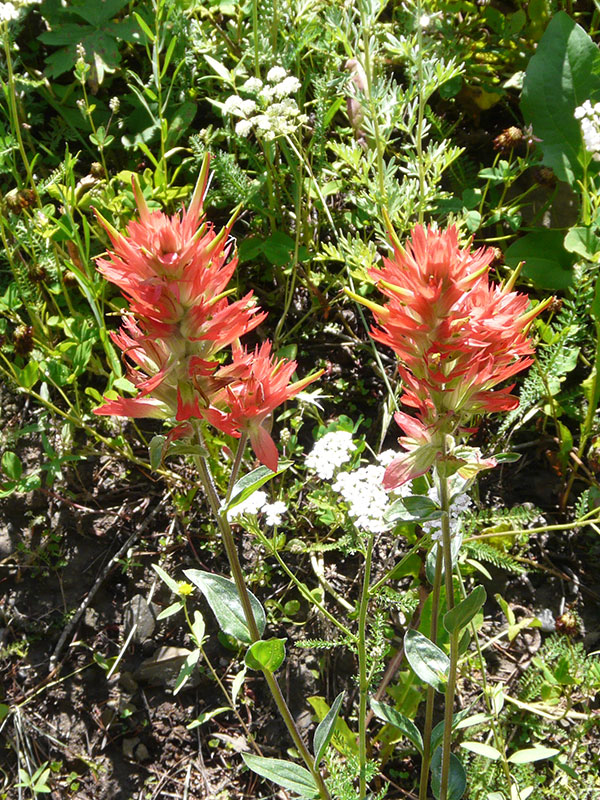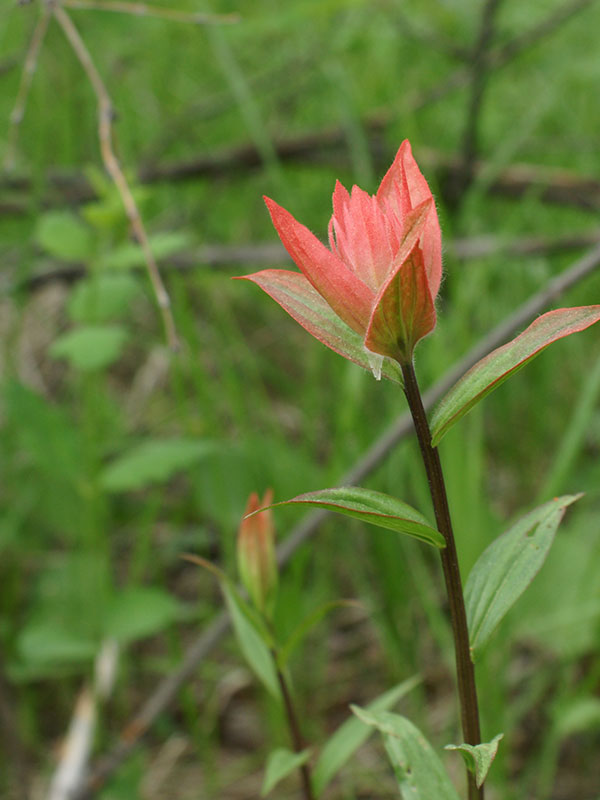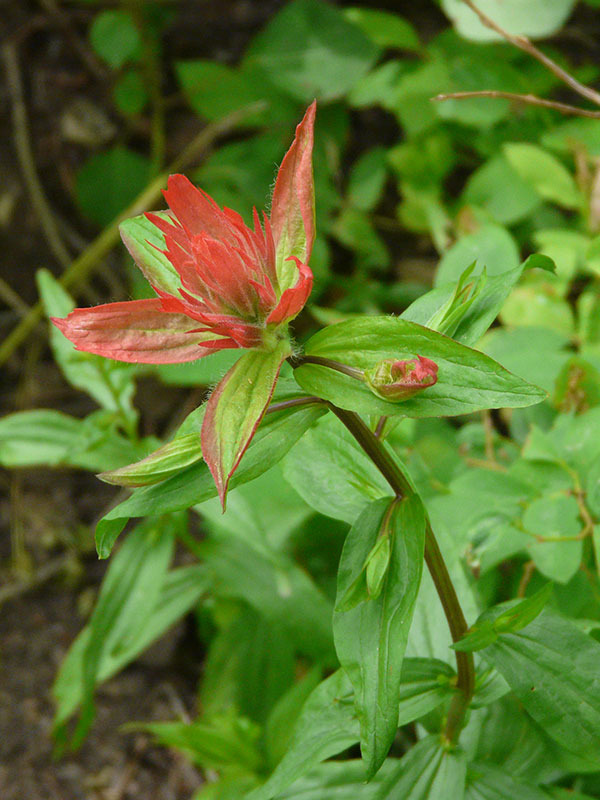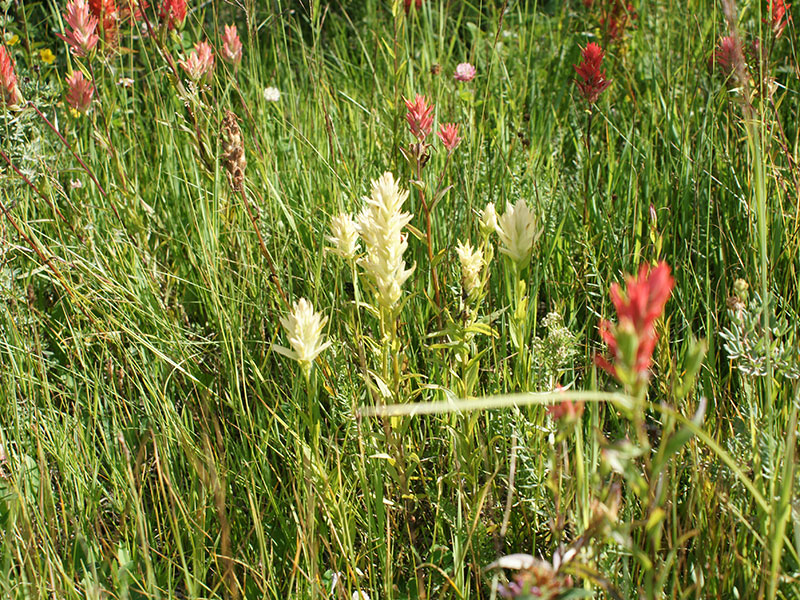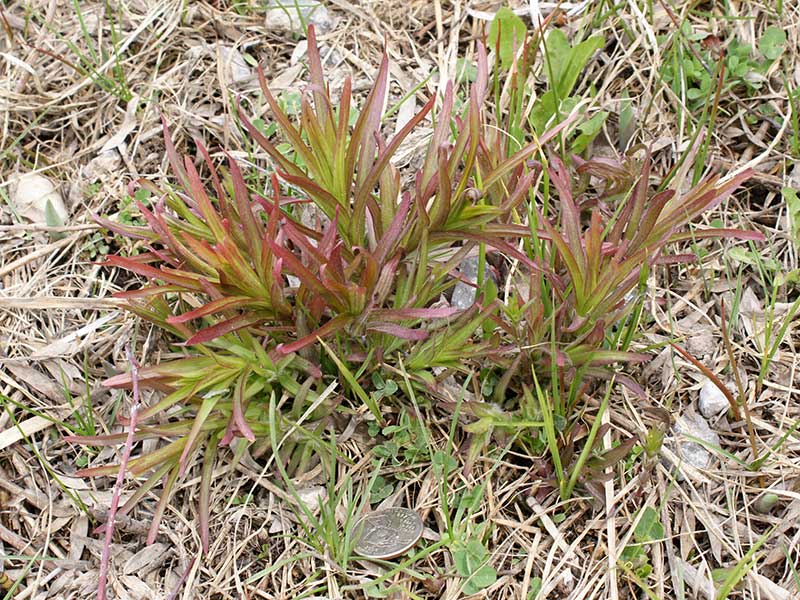Castilleja miniata / scarlet paintbrush
- bright red, or orange or sometimes yellow bracts that are mistaken for flowers
- looks like a red feather duster, but only a few inches long
- generally low, and along streams or roadsides on hills where there is moisture
- leaves ovoid with prominent veins, no petioles
Also known as: giant red Indian paintbrush, slender Indian paintbrush, harsh paintbrush, common red paintbrush, cliff paintbrush, common paintbrush
See also: Castilleja spp / Indian paintbrushes
If you were walking down in the valley proper (or, frankly, up on the hills), along a roadside, perhaps along a creek/roadside, and you saw some red that you could simply guess was an “Indian paintbrush”, the chances are extremely good that it would be C. miniata. This is the most common paintbrush in Idaho. It is perennial and grows at all elevations. It blooms throughout the summer.
As noted on the general page about the paintbrushes, the things that we initially think of as flowers, aren’t. They are bracts, modified leaves in whose axils you might find the thin, yellow “rolled up” calyces (plural of calyx) that enclose the flowers.
There are a couple things that distinguish this species from other paintbrushes. First, if you look at the bracts, each is commonly split into three parts – two narrow, semi-tubular spurs with one, longer, much wider segment between them. The bracts are often greenish towards the base. The bracts are a bright scarlet or bright red, although they can, less frequently, also be orange or yellow.
In the case of the yellow ones shown in the gallery, these could be some kind of variant (mutant) because they were the only yellow ones in a large population of red individuals. It would be interesting to know more about the genetics. There should be ample opportunity for that sort of thing given that the normal (diploid) chromosome number can be 24, 48, 72, 96 or 120.
The second feature is that the leaves are ovoid – elongated ovals and don’t have petioles. They alternate on the stem. If you have other species for comparison, these are somewhat wider than most. They have pointed tips and three, prominent lengthwise veins, and are not lobed, notched, toothed or whatever. In some cases the leaves are covered with slightly sticky hairs, in others not.
As with other members of the genus, scarlet paintbrush is hemiparasitic, the hosts probably being grasses in most cases. This feature of the life style makes scarlet paintbrush very difficult to transplant but seeds can be sown in grassy areas, even right down on the cut bases of the grass, and germinate successfully.
| Color | |
|---|---|
| Family | |
| Blossom size | |
| Inflorescence size | |
| Inflorescence type | |
| When? | |
| Where? |
